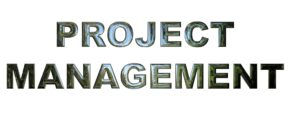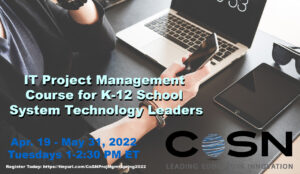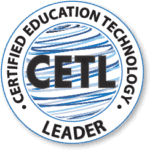Continued from: Why Project Management Is Crucial for the Educational Technology Leader
In my current role as a Senior Project Manager leading statewide educational technology projects and Initiatives over the last 5-6 years, I regularly participate in formal and informal Project Management (PM) course work and training. As a result, I have found that PM knowledge areas, processes, tools, and resources continue to move forward quickly. And in my role to move education forward, I must continue developing these skills and use the most effective PM strategies. So let’s explore some of the critical PM categories, what you need to build in those key areas and real-life examples of how their implementation set my colleagues and me up for success.

Effectively work with and engage stakeholders at all levels to help complete and promote educational initiatives.
-
- One of the first tasks a project manager does is to create a list of stakeholders with details on their role, requirements, expectations, interest, influence, and how best to communicate with each of them. (There are many stakeholder registry and assessment templates available that you can easily download and use to help manage this information.)
- Next, determine how to utilize critical stakeholders to help define and plan project requirements and details. This helps ensure the project meets the needs and adds value to the organization.
- Then manage these key stakeholders to help promote the project with support and regular communication.
Example: One of my projects with a high level of stakeholder involvement and management is the Digital Teaching and Learning Statewide Inventory project. This project includes the following stakeholders: the state legislature, the state board of education, UETN leadership, UTEN project staff, district/school educational and technology leadership, database administrators, programmers, server administrators, data analysts and third-party partners.

Developing and implementing successful project plans. In many cases, today’s technology-related projects require a large amount of flexibility, agility, and an iterative approach to planning and implementation. Project planning should be done once at a high level at the beginning of the project, and then more detailed planning should be done incrementally as the project progresses. In addition, project plans, in most cases, should be updated regularly. This is key in helping ensure the project adds value to the organization.
-
-
- Complete project charter or ensure there’s an authorization for the project. Project charter templates are available to help.
- Work with key stakeholders, project team and sponsors to define a high-level Scope for the project. Again templates are available for download and use to help collect and manage this information.
- Use a lightweight planning tool. For example, my current organization uses, and, I highly recommend, a project planning process called VSAM:
- Vision- What is the projects vision, where do you want to go, or what does the project look like when its complete. The vision should not change much throughout the project, so it must be defined upfront and tied to the scope.
- Strategies- Determine and list strategies that can be implemented to accomplish the vision. These are high-level activities/objectives.
-Strategies in most cases should be flexible and can be changed, added or deleted based on adding value and meeting the vision.
-Each vision statement can have multiple strategies. - Actions- These are the work packages/tasks that need to be completed to meet the strategies.
-Each action has resources assigned and a due date. - Measurements- How/what you will measure to determine if you are successful in meeting the vision?
-
Example: One of my current projects with this iterative planning approach is the Private LTE/5G CBRS project. As this is a quickly evolving and cutting-edge technology, the project team continues to update, change, or add to the project plan every day.
Communication Plans
Developing the expertise and use of tools and processes to communicate with teams and departments in an educational setting successfully.
-
-
- Remember, Project Managers spend 75-90% of their time communicating.
- Develop a communication plan for the project, including stakeholders, social media tools, how often and when to communicate. There are many templates available to help with this process.
- Communicate with your project team members and other stakeholders in ways they want to communicate (e.g., Not all team members use email, so if you send a blanket email to the entire team, don’t expect everyone to see and react to it.)
- Use a Project Management tool to track and share project reports, communications and assignments all in one place. Learn about the different options as part of a PM course.
-
Example: The statewide WiFi Cares program, a multi-project program I managed, shows the successful implementation of a communication plan. This 13-million-dollar program included most of the UETN technology and administrative professionals, all of the districts in the state and over 100 charter schools. We effectively utilized all possible communication tools and strategies for communicating project details, assignments, roles, etc. For example, we included social media, recording and hosting WebEx meetings, publishing these meetings, website publishing, providing access for all project sites to our project management tool, Slack, texting, calling, site visits, etc. Because of this successful and organized communication plan, all projects within this program completed their WiFi upgrade concisely and timely.

Focusing on being a highly successful and supportive leader of project teams. Project Management is about helping and supporting team members to accomplish their pieces of the overall project.
-
-
- Select cross-functional team members from different departments in the school organization and, in some cases, team members outside the organization (parents, community leaders, etc.) to help implement the project.
- Define and communicate team member roles for the project; For example, I like to use the RACI Matrix template.
- Include team members in the decision-making and planning process.
- Encourage open dialogue and sharing of ideas, and develop a collaborative environment for all team members.
- Lead effective meetings where you start/end on time, cover action items, etc.
- Delegate and share leadership roles across team members.
- Lead, inspire, coach and mentor team members (e.g., Be a servant leader).
- Recognize and reward successes.
-
Example: One of my projects with a high level of teamwork is the Private LTE/5G CBRS project. This project team includes all levels and many technology and educational professionals working across the state to complete this project.
Project Integration
Ensuring technology projects and initiatives are integrated systemically throughout the educational organization, adding value and making a difference in the learning environment.
-
-
- Integrating, balancing and pulling the Project Management Knowledge Areas (Scope, Time, Cost, Quality, Human Resources, Communication, Risk, Procurement and Stakeholders) pieces together to complete the project.
- Understanding and collecting details from your overall educational environment.
- Examples and learning opportunities are provided during professional development courses or workshops.
-
Suppose you are at a place in your career where you understand PM is more than just completing projects on time and within budget—acknowledging how PM is also about assisting educational administration/leadership/policymakers to determine the correct or most appropriate projects to dedicate resources and time to and decide which projects to move forward and complete. And how to understand at a higher level than the Project Manager’s main role is to ensure projects and initiatives add value to the organization and how you can show this to your constituents. Then, please read more about the course I will co-teach with Frankie Jackson this spring, CoSN’s IT Project Management Course for K-12 School System Technology Leaders and review its syllabus to explore what might be your next best professional move.


Cory Stokes, CETL
Utah Education & Telehealth Network (UETN)
IT Project Manager Sr.


CoSN is vendor neutral and does not endorse products or services. Any mention of a specific solution is for contextual purposes.


